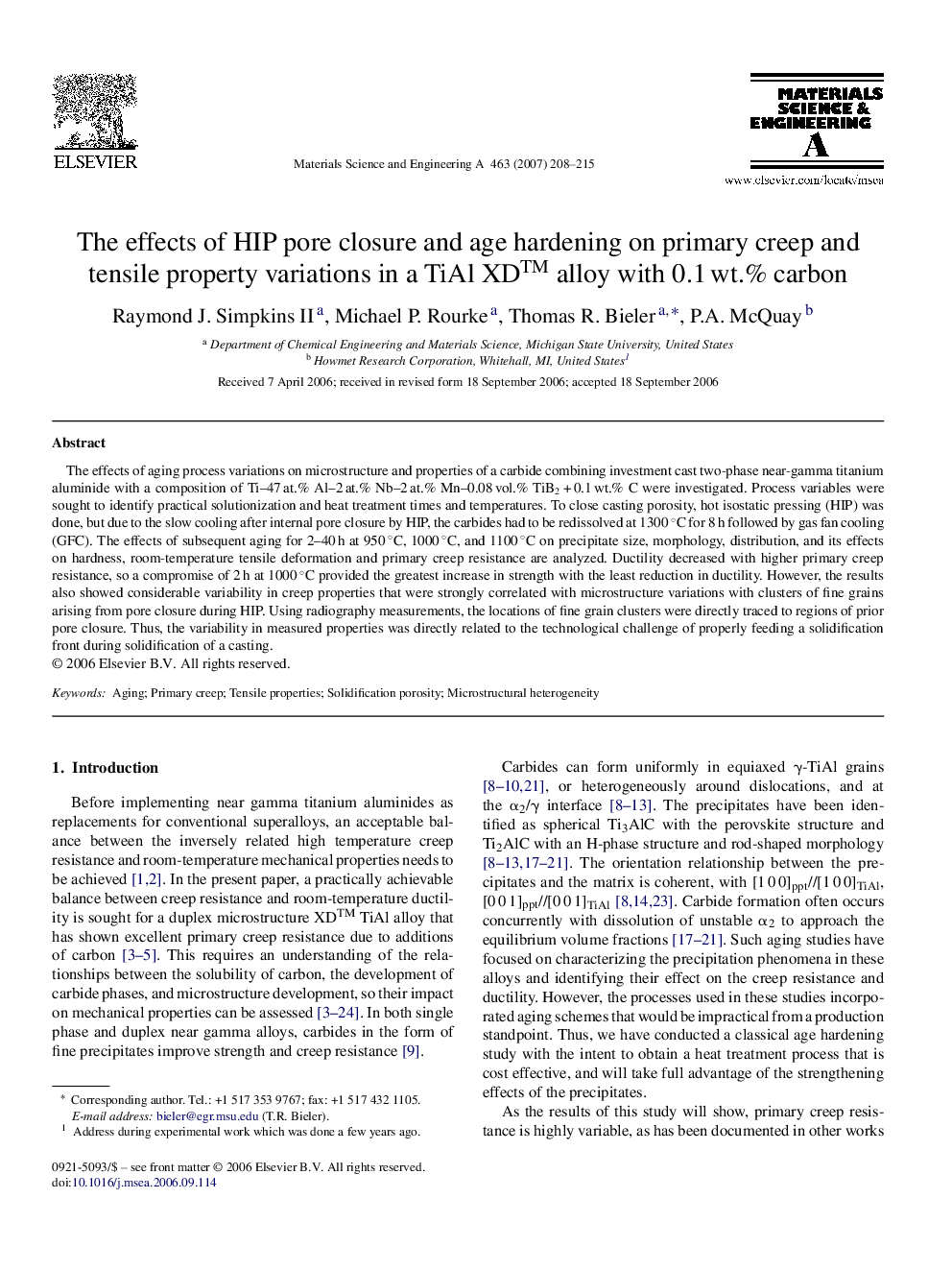| Article ID | Journal | Published Year | Pages | File Type |
|---|---|---|---|---|
| 1583760 | Materials Science and Engineering: A | 2007 | 8 Pages |
The effects of aging process variations on microstructure and properties of a carbide combining investment cast two-phase near-gamma titanium aluminide with a composition of Ti–47 at.% Al–2 at.% Nb–2 at.% Mn–0.08 vol.% TiB2 + 0.1 wt.% C were investigated. Process variables were sought to identify practical solutionization and heat treatment times and temperatures. To close casting porosity, hot isostatic pressing (HIP) was done, but due to the slow cooling after internal pore closure by HIP, the carbides had to be redissolved at 1300 °C for 8 h followed by gas fan cooling (GFC). The effects of subsequent aging for 2–40 h at 950 °C, 1000 °C, and 1100 °C on precipitate size, morphology, distribution, and its effects on hardness, room-temperature tensile deformation and primary creep resistance are analyzed. Ductility decreased with higher primary creep resistance, so a compromise of 2 h at 1000 °C provided the greatest increase in strength with the least reduction in ductility. However, the results also showed considerable variability in creep properties that were strongly correlated with microstructure variations with clusters of fine grains arising from pore closure during HIP. Using radiography measurements, the locations of fine grain clusters were directly traced to regions of prior pore closure. Thus, the variability in measured properties was directly related to the technological challenge of properly feeding a solidification front during solidification of a casting.
